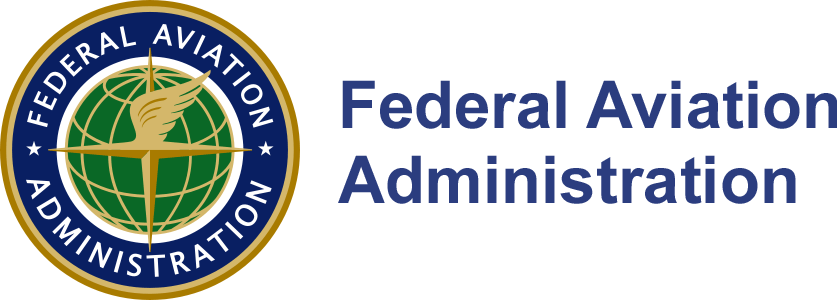
A few days ago Congress published a bill generally referred to as the “FAA reauthorization” – a 279 page document that allocates funding for the FAA for the next several years and also sets policy mandates for the FAA and the Department of Transportation. Formally know as the “Aviation Innovation, Reform, and Reauthorization Act of 2016”, the bill makes some major changes to ATC and includes a number of significant positives for general aviation, including the long sought 3rd class medical reform.
3rd Class Medical Reform
The reauth bill includes provisions that would effectively eliminate the current 3rd class medical requirement within 180 days of enactment. It would allow any pilot with a valid driver’s license to carry up to five passengers in aircraft weighing up to 6000 pounds, on flights below 14,000′ MSL and at speeds below 250 knots. To qualify, the pilot would be required to take a free online medical education course every two years.
This is a bit different from the changes covered in the Pilot’s Bill of Rights 2 that was recently passed by the Senate. That bill required a 3rd class medical for new pilots, and for any pilot who had not held a valid medical certificate within the past ten years. It also limited operations to aircraft weighing less than 6000 pounds, but set the ceiling slightly higher at 18,000′ MSL. It also mandated a checkup by a primary care physician every four years. While it’s hard to predict the future, it’s quite likely that the reauth will eventually be rewritten to match the PBOR2 simply to reduce friction.
Much like the PBOR2, the language in the reauth gives the FAA 180 days to produce rules that meet the intent of the law. If they fail to meet that deadline, the law explicitly prohibits them from taking any action against pilots who operate within the specified limitations without a medical. This is one of the few places where the bill actually adds teeth. Other sections set deadlines for changes but do not include any penalty that automatically triggers if the Administrator fails to meet it.
(edit: added weight limit, removed John Travolta joke)
ATC Privatization
The biggest change outlined in the bill is a controversial plan to move air traffic services away from the FAA and into a stand-alone not-for-profit “ATC Corporation”. (Catchy name, eh?) The GA alphabet organizations (AOPA, EAA, NBAA) have long been opposed to this for fear that the change would result in user fees being levied for use of ATC services. Anticipating that objection, the bill prohibits user fees for piston and non-commercial turbine aircraft:
(c)(4) Charges and fees may not be imposed for air traffic services provided with respect to—
(A) aircraft operations of piston engine aircraft; or
(B) noncommercial aircraft operations of turbine engine aircraft.
Why they chose to make this distinction by propulsion technology is something of a mystery. If the goal is to carve out GA and only charge commercial carriers, it would seem logical to specify who pays based on the operating rules. “Only those flight operations conducted under Part 121 or Part 135 are subject to user fees.” or similar.
The bill also specifically prohibits the new ATC Corporation from giving preferential access to airspace based on who’s a paying customer. Specifically:
(d) Access To Airspace.—Neither the amount of charges and fees paid nor the applicability of subsection (c)(4) shall be determinant of access to airspace.
Those two provisions would seem to place GA in a pretty solid spot, but the devil is always in the details. AOPA appears to be taking a cautious wait-and-see approach, while EAA’s initial take on the bill notes concerns about the limited level of input available to GA and the potential for a “money talks” reality in a privatized world. The difference in the response may well be attributable to the way that the governance system for the proposed corporation is structured. The board would be made up of 11 individuals with 2 representing GA. The two would be selected thusly:
(4) 2 Directors nominated by the Nominating Member appointed by the principal organization representing noncommercial owners and recreational operators of general aviation aircraft.
The “Nominating Member” – the individual appointed to the nominating committee for the board – will be selected as follows:
(B) An individual appointed by the principal organization representing noncommercial owners and recreational operators of general aviation aircraft.
And here you see the potential for a turf battle. Which group is “the principal organization representing noncommercial owners and recreational operators“? Is that the AOPA or the EAA? Who gets to make the decision?
(b) Determination Of Principal Organizations.—
(1) BEFORE DATE OF TRANSFER.—Before the date of transfer, and not later than 30 days after the date of enactment of this subtitle, the Secretary shall determine the principal organizations referred to in subsection (a)(2).
(2) AFTER DATE OF TRANSFER.—On and after the date of transfer, the Board shall determine the principal organizations referred to in subsection (a)(2) in accordance with the bylaws of the Corporation.
So for the initial period, the decision gets made by the Secretary of the Department of Transportation. I’m a member of both AOPA and EAA and believe strongly in the good done by both organizations. That said I’m almost certain that the Secretary will select AOPA as the “Principal Organization” – it represents a broader swath of the private GA world than EAA. (I would personally love to see them work together on this, but power has an interesting effect on organizational dynamics.)
The bill specifically hands the nominating membership and the board seats to the “principal organization representing noncommercial owners and recreational operators of general aviation aircraft” so what about Business Aviation? As it stands now, they and a bunch of other groups get seats at the kids’ table. The bill provides for a board of advisors that includes BizAv, airport operators, the Department of Defense, aerospace manufacturers and other groups that may have an interest in air traffic.
To be honest, as long as I can fly when and where I want without being nickeled and dimed, I don’t personally care if ATC is a function of an agency or of a federally chartered private corporation. Perhaps I’m naive, but the governance structure is irrelevant to me. Anyone out there have a good counterargument? Am I missing something?
Homebuilding At Federally Funded Airports
For the past several years there has been some argument over whether a tenant at an airport that receives federal funds can use that space to build an airplane. At question is whether or not construction of a homebuilt aircraft qualifies as an “aeronautical activity”. While it should seem obvious to any reasonable person that building an aircraft is at least as “aeronautical” as storing one, some bonehead airport administrators have used it as an opportunity to push out homebuilders in favor – presumably – of tenants that buy more fuel.
The reauth bill put those dastardly plans asunder by defining building a recreational aircraft as a duly aeronautical activity:
“(t) Construction Of Recreational Aircraft.—
“(1) IN GENERAL.—The construction of a covered aircraft shall be treated as an aeronautical activity for purposes of—
“(A) determining an airport’s compliance with a grant assurance made under this section or any other provision of law; and
“(B) the receipt of Federal financial assistance for airport development.
Note that “covered aircraft” in this case means “covered by this law” – it does not mean that it only applies to the Polyfiber crowd. Hopefully that will put an end to one of the more silly aeronautical kerfuffles of the recent era.
Retrofit Of Avionics For GA Aircraft
If you’ve read any of the articles that I’ve written (other than the one about how my ailerons froze on takeoff once), you probably know that I have a personal passion for hacking through the red tape that makes it impossible (or at least economically unfeasible) to upgrade legacy aircraft with safety-enhancing modern technology. It seems that Congress feels the same way. The reauth bill includes a small but vital section that attempts to force the FAA to finally get over its fear of computers and allow us to retrofit our aircraft in ways that make sense.
(a) Policy.—Not later than 180 days after the date of enactment of this Act, the Administrator of the FAA shall establish and begin implementation of a risk-based policy that streamlines the installation of safety enhancing equipment and systems for small general aviation airplanes in a manner that reduces regulatory delays and significantly improves safety.
(b) Inclusion Of Certain Equipment And Systems.—The safety enhancing equipment and systems for small general aviation airplanes referred to in subsection (a) shall include, at a minimum, the replacement or retrofit of primary flight displays, auto pilots (sic), engine monitors, and navigation equipment. [emphasis added]
(c) Collaboration.—In carrying out this section, the Administrator shall collaborate with general aviation operators, general aviation manufacturers, and appropriate FAA labor groups, including representatives of FAA aviation safety inspectors and aviation safety engineers certified under section 7111 of title 5, United States Code.
(d) Small General Aviation Airplane Defined.—In this section, the term “small general aviation airplane” means an airplane—
(1) that is certified to the standards of part 23 of title 14, Code of Federal Regulations;
(2) has a seating capacity of fewer than 9 passengers; and
(3) is not used in scheduled passenger-carrying operations under part 121 or 135 of title 14, Code of Federal Regulations.
This is exactly what I’ve been looking for. Unfortunately, I don’t think the policy wonks who wrote this have a very solid understanding of the actual requirements and processes – things like TSO authorization, STCs, etc. – that stand in the way of this. This is rather an expansion of the language from the General Aviation Revitalization Act from 2013 which demanded that the FAA have had the complete Part 23 rewrite complete by December 15, 2015. That day came and went and so far as I can tell, nobody was fired, demoted, or even publicly humiliated for the failure.
What this needs is some teeth – a bit like the medical provision included. It should say that if the Administrator fails to act by the deadline set in the statute then owners of applicable aircraft may begin operating them under the regulations that currently govern Experimental Amateur Built aircraft without threat of enforcement for violation of current airworthiness regulations. (Statutes always trump regs. Yay statutes!) I’m not holding my breath, but I have to guess that this would get things rolling.
Aircraft Certification Reform
The bill attempts to get some motion on a wholesale improvement in the torturously slow and complicated process of certifying new aircraft. It creates a new advisory committee at the DoT (rather than FAA) level that is tasked with reviewing the FAA’s current certification process and providing suggestions for improvement. This is essentially what the Part 23 ARC did for Part 23 certification back in 2012, but apparently congress wants this to be an ongoing effort.
Specific efforts outlined in this section include a comprehensive review of the FAA’s current engineering designee program with an eye towards expanding it and giving DERs greater autonomy. The bill also calls for an emphasis on risk-based (as in “risk continuum”) regulation rather than the current “one size fits all” approach. With any luck this will all flow in with the Part 23 rewrite to result in a much smarter process for certifying GA aircraft.
Unleaded Avgas
There’s a hand-wavy section that calls for the Administrator to approve the use of unleaded avgas as soon as the Administrator decides that there’s a suitable replacement. It does include a specific demand that once a suitable drop-in replacement is found the FAA:
(3) adopts a process (other than the traditional means of certification) to allow eligible aircraft and engines to operate using qualified replacement unleaded gasoline in a manner that ensures safety.
I interpret that as a demand to skip the per-model STC process for certification and simply offer a blanket approval for any aircraft that currently burns 100LL. This seems kind of obvious. Hopefully the deadline (again, imposed without any teeth) will help make unleaded gas a reality sooner rather than later.
ATC Privacy
There’s a provision in the bill that would require the FAA and the ATC Corporation provide a means to hide the registration number of private aircraft at the owner’s request. This is probably well intentioned, but a combination of direct ADS-B and the public record registration database (which includes ICAO codes) makes this pointless.
Part 91 Review and Streamlining
The bill calls for the creation of a GA-lead task force to review the FAA’s current rules for Part 91 operation. In general the task force is charged with looking for ways to improve processes related to the bureaucratic minutia handled by the FAA: letters of authorization, delegation to appropriate designees, methods for training FAA personnel. In general this sounds like yet another attempt to reform the culture of CYA that’s endemic a the agency. The Part 23 ARC report blamed the majority of the issues with certification on the internal culture. This expands that to encompass more than just the ACO.
10 Year Registration
A final bone tossed to us: they want to expand the registration period for aircraft to 10 years. Sounds good to me.
What’s Missing
Tort Reform – The price of new aircraft will not come down until we get blanket tort reform. The bill should make all lawsuits involving aircraft federal. It should also define private aviation as an inherently risky activity. Better still – cap the recovery from any GA accident at $1m (the amount covered by most GA insurance policies). THAT would help revive GA.
Teeth – Every provision in that bill that has a deadline should have a section outlining the repercussions that will automatically occur should the agency fail to meet it. That’s the only thing that will make it move at anything more than its traditional, glacial pace.
Here’s a link to the full text for anyone who’s interested: https://www.congress.gov/bill/114th-congress/house-bill/4441/text


